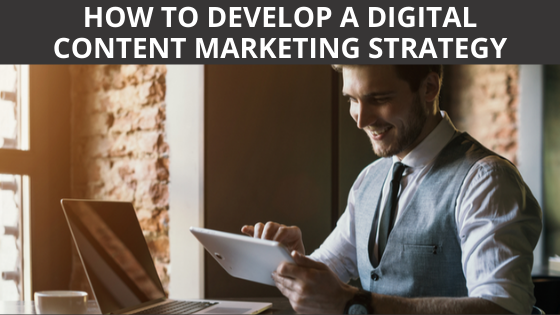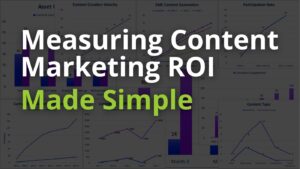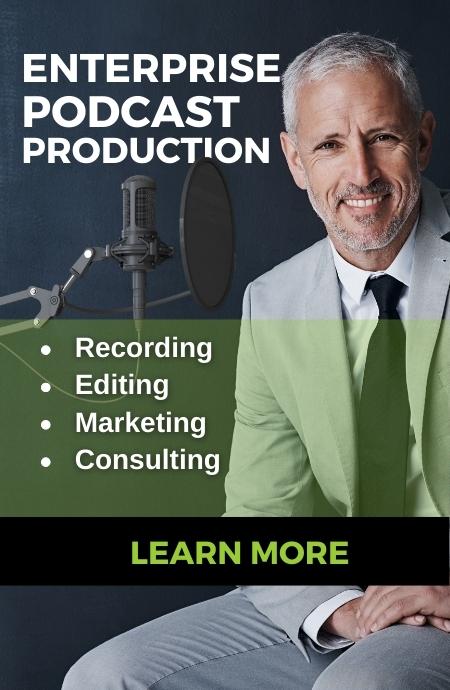Developing an effective content marketing strategy in today’s highly competitive business environment takes effort. Will it be able to engage your target audience? And if so, can it convert them into leads?
Whether you’ve been strategizing for a while or you’re just starting, it never hurts to revisit your content strategy plan. This way, you’ll be making sure that you’re keeping up-to-date with the latest trends and innovations in the industry.
What is a Digital Content Marketing Strategy?
First, let’s revisit the core definition of Content Marketing. According to the Content Marketing Institute, “Content marketing is a strategic marketing approach focused on creating and distributing valuable, relevant, and consistent content to attract and retain a clearly-defined audience — and, ultimately, to drive profitable customer action.”
In other words, content marketing is the strategic use of written text, images, video, and audio as marketing materials to reach and maintain a connection with your target audience.
In itself, content marketing focuses on the tactics and execution of content. This implies the actual creation, curation, and editing of content for the purposes of marketing. Content marketing is about creating content that people want to consume as well as help them through the sales funnel.
A content marketing strategy, on the other hand, encompasses content marketing but also concerns itself with other matters. These include things like vision, goals, ideation, audience engagement and reach, voice and style, internal and external governance. Its focus will be on the hows and whys of content marketing, guiding it toward success.
That said, let’s take a look at what makes up a comprehensive digital content marketing strategy.
Determine Your End Goals
Without any particular and objective goals, companies will have no idea if their efforts have any effect or not. Without setting goals within your content marketing strategy you will be working in the dark. Yet, by setting concrete goals, documenting them, and reviewing them periodically, marketers can increase their chances of success by 376% according to Coschedule’s State of Marketing Strategy Report.
You should have a clear understanding about why you’re investing in content marketing and why you’re developing a content strategy. Some solid goals of content marketing include:
- Brand Awareness
- Lead Generation
- Lead Nurturing (Pre and Post Sale)
- Sales
Oftentimes, companies choose goals that are too vague. Some may say that they want more sales or increase their total number of leads. This usually leads to failure because they are either unrealistic or have no indicators that define success.
By setting up SMART goals, companies can avoid these issues. SMART stands for Specific, Measurable, Attainable, Relevant, and Time-Based and your goals need to meet these criteria.
The SMART framework:
- Specific: Your goal needs to state exactly what it wants to achieve (e.g. increase monthly sales, increase quarterly leads, etc.)
- Measurable: Include information that would indicate that goal’s success and how to measure it (e.g. increase monthly sales by 100, or leads by 5%, etc.)
- Attainable: Make sure that your goal is actually attainable and realistic given your available time and resources.
- Relevant: Also, make sure your goal is relevant for your business.
- Time-Based: Lastly, give your goal a timeframe in which it can be achieved.
Which Types of Content Work Best for Your Goals?
Once you have your goals set in place, it’s time to select the type of content that will best suit your end goal. That said, there are several types of content that almost every content marketing strategy will need to include.
Long-Form Blog Articles
Blog posts are typically an essential part of the overall content marketing strategy and can generate good results. The focus should be placed on long-form content; over 1,000 words. These tend to be easier to rank in Google’s search results due to the ability to build rich keyword frequency.
Video Content
Video content lives far beyond your website. I can be distributed through social channels and can gain search attention from proper YouTube practices. Video increases conversion rates and lengthens the amount of time that visitors spend on web pages.
Statistics indicate that 53% of consumers will engage with a brand after watching one of their videos on social media. That number increases to 66% when it comes to the millennial generation. Also, 88% of marketers say that they’re satisfied with their video marketing ROI.
What’s more, 72% of people would prefer to learn about a product or service via video than text. With numerous types of video content to choose from, companies can use video marketing all throughout the sales funnel, guiding their leads down their respective buyer’s journeys.
8 Ways that Video Demonstrates Effectiveness at Content Marketing
You’ll also want to include other forms of visual content, as these will help improve engagement. Be it eye-catching images, infographics, GIFs, graphical data, screenshots, and even memes, among others, can help reach your goals. If they are in line with your organization’s style and tone, your social media strategy will improve.
Native Social Content
Content generated specifically for social has the potential for the greatest reach. It can be created from remixing other longer-form content and can be repurposed for multiple channels. No matter what other forms of content you create, they can all be maximized by being redistributed through social networks.
No modern content marketing strategy can go without utilizing social media and content native to each individual social platform performs the best.
Podcast Content
It’s also a good idea to consider podcasting as an effective marketing tool. eMarketer predicts that by 2022, 83.8 million people in the US will listen to at least one podcast per month.
Regardless of whether you believe the growth in podcasting will last, the fact is that podcasting is not a new platform and even after the hype slows, there will be businesses that benefit from this form of content.
Podcasts are one of the slower types of content marketing formats to prove ROI, however, it also is one of the most targeted. Podcast listeners tend to be more targeted and focused on the messages that they choose to consume.
Downloadable Assets
White papers, research, and other gated content are the leading B2B generator of website leads. The original form of digital content marketing, downloadable content provides the best connection between the content and the prospect simply because the prospect identifies themselves each time a form is completed to receive the downloadable asset.
Downloadable content in the form of white papers, eBooks, case studies, product sheets, worksheets, webinars, etc., can act as lead magnets and boost your overall lead generation.
Content Mapping
Content mapping allows you to outline how each piece of content relates to and supports the customers’ buyer journey. It will also help you connect your content to every stage of the journey and better visualize your audience’s needs. Creating a content map will help determine where in the funnel your audience engages with your content.
Likewise, it will show how your content helps customers at every stage and how to guide them through the funnel. There are several steps that go into creating a content map. The key steps are as follows:
- Creating Buyer Personas – A buyer persona is a detailed description of your ideal audience. It typically outlines several key characteristics like:
- Demographics: Age, gender, income, education, location, social status, etc.
- Professional Roles: Job title, company size, industry, etc.
- Values and Goals: personality characteristics, values, personal and professional goals, etc.
- Challenges: Pain points, fears, personal and professional issues, etc.
- Information Sources: Favorite blogs, books, thought leaders, etc.
- Buying Habits: Where they buy, the length of their buying cycle, buying decisions, etc.
- The Buyer Journey Map – It outlines your brands’ own sales funnel and how your ideal customers move through it. The buyer journey map showcases five stages of the funnel:
- Awareness
- Engagement
- Evaluation
- Purchase
- Post-purchase
Content Analysis for Your Content Marketing Strategy
- Content Analysis – This step helps you understand what content works best in each phase of the buyer journey.
- The Awareness Stage – This requires top-of-the-funnel content that attracts new prospects to your brand. Blog posts, videos, infographics, social media posts, podcasts, and interactive content typically works well here.
- The Engagement Stage – This stage requires content that keeps audiences interested in your brand until they are ready to buy. Email newsletters, as well as the content at the awareness stage, will work well.
- The Evaluation Stage – Middle-of-the-funnel content will inform customers as they decide on the product, services, and brand they want to go with. Webinars, landing pages, product sheets, white papers, eBooks, and testimonials, will work here.
- The Purchase Stage – Bottom-of-the-funnel content interacts with customers as they are ready to buy, reassuring them about their decision. Reviews, testimonials, demo videos, FAQs, landing pages, use cases, product updates, and other downloadable content works.
- The Post-Purchase Stage – This content supports customers after they’ve made a purchase. It helps them become loyal and repeat customers. Social media posts, user guides, newsletters, surveys, coupons, etc.are included here.
All of the information found here will also help you determine how much content you need to create. There is a simple formula that you can follow:
(The Total number of personas) X (Five Stages) X (The total number key points each persona needs to learn at each stage) = Pieces of content required
Plan a Distribution Strategy
Too often companies post content once, in one place, and let it die there. Other brands make the mistake of posting their content anywhere and everywhere. In doing so, they hope to increase their chances of achieving their desired results.
The problem with this approach is that it holds little to no regard of whether the right people are reached. It also doesn’t take into account if all of their questions are answered. Likewise, there’s no way of knowing if their content marketing strategy will guide leads through to an eventual sale.
To avoid these problems, it’s best that you plan a distribution strategy. This strategy should not only support your goal and content type but should also highlight the consumer’s content path. You should create a flow diagram of the path expected to be taken after interacting with each piece of content.
This way, you will be able to better map the buyer journey, ensuring that there are no missing content gaps. Your leads will have a clearly laid down path, with relevant content awaiting them at every step of their journey.
Create a Production Plan
It is important that organizations execute a comprehensive production plan that manages everything from content creation to design and distribution. There are several key points that need to be addressed here.
- The types of content that you intend to publish and at which points along the buyer’s journey.
- When will this content be published? You will also have to establish a posting frequency and stick to it. Make sure that you have the necessary time to have a consistent flow of content without any interruptions.
- Who will be involved in the production process? Consider content writers, designers, editors, publishers, social media managers, etc. You will also have to figure out who will actually create the content. Will it be an in-house team or are you going to outsource your content production to third-party agencies?
This decision will be based largely on how many resources you have available for content creation, particularly in terms of video production, podcasting, and graphic design. Consider how much of your marketing team’s time you want to delegate to other parts of the content marketing strategy. - Who will monitor content and social engagement along the way? You will also need to assign people that will keep an eye on content performance and audience engagement.
Tracking and Measurement
Begin with the end in mind. Measuring your content marketing campaigns should begin even before you start creating your content. You will need to establish what applications and tracking tools are available as well as planning tracking scripts, custom URLs other available tools. Google Analytics is one of the best free analytics tools on the market when it comes to monitoring your website’s traffic and your content’s performance.
To get deeper insights into your prospects’ interactions with your campaign, you will need to look at a marketing automation platform that can not only monitor web traffic but can give you insight as to what deals or opportunities were influenced by your marketing efforts.
Collecting data isn’t enough. You will also need to analyze it to better understand the overall performance of your content marketing strategy. Similarly, you will find out where improvement opportunities may exist.
It will also help you determine the best way to improve those numbers. For instance, your blog posts are performing great on social media, generating views, likes, and shares. A proper analysis will show you the best ways to leverage these high-performing topics across other platforms. It will also help generate better conversion rates.
Conclusion
Whatever the case, you should decide what success looks like and measure for that. Know who will do the measuring and the tools they have at their disposal. Make sure that these will be sufficient to surface the data needed for measurement. They should also be enough for proper analysis. Measuring the results of your content marketing strategy will let you constantly improve.
Want to learn more? Talk to a professional Content Monsta!
Content Monsta is listed as a Top Marketing Agency by Design Rush.
Content Marketing Strategy FAQ
What is a Content Marketing Strategy?
A content marketing strategy encompasses content marketing but additionally focuses on the hows and whys of content marketing, guiding it toward success. It encompasses the marketing vision, goals, audience engagement and reach, voice and style, in addition to final measurement of effectiveness and ROI.
Why Video for Content Marketing?
Video content lives far beyond your website. I can be distributed through social channels and can gain search attention from proper YouTube practices. Video increases conversion rates and lengthens the amount of time that visitors spend on web pages.
What is Content Mapping?
Content mapping allows you to outline how each piece of content relates to and supports the customers' buyer journey. It will also help you connect your content to every stage of the journey and better visualize your audience's needs.
What goes into a Content Production Plan?
A marketing content production plan should include: What types of content will be created. Who will be involved in the production process. How will the content be targeted? Who will monitor the content and engagement for success?
- AI + Human Powered Content Marketing: Speed Without the AI SlopFAST, CHEAP, and GOOD. You can have them all. Speed keeps …
- How to Measure Content Marketing ROIContent marketing ROI is often miscalculated because it is based on …
- Why Pay for Remote Video ProductionIf you already have someone on your team who can edit …








